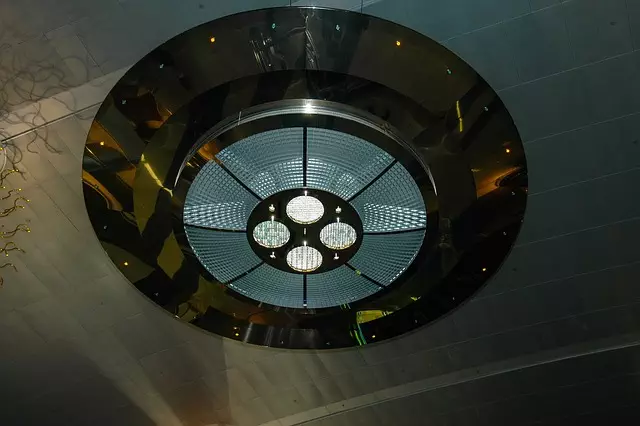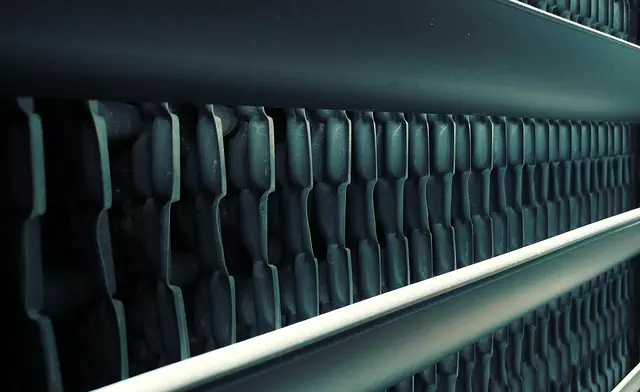Industrial ventilation systems, particularly Variable Air Volume (VAV) systems, are advanced solutions for optimizing airflow and enhancing workplace air quality management. These systems adapt to real-time occupancy and environmental conditions, ensuring energy efficiency while meeting stringent ventilation safety standards in diverse settings like manufacturing, healthcare, and commercial buildings. By controlling air volume precisely, VAV systems improve indoor environmental quality, create comfortable work environments, and maintain employee health and safety by dispersing contaminants effectively. Regular inspections, maintenance, and adherence to best practices are crucial for ensuring compliance with ventilation safety standards, preventing hazards, and avoiding fines.
“Discover the transformative power of Variable Air Volume (VAV) systems in modern workplaces. This comprehensive guide delves into the intricate world of industrial ventilation systems and their pivotal role in enhancing workplace air quality management. Understanding VAV technology isn’t just about improving comfort; it’s a strategic move towards ensuring compliance with ventilation safety standards. From manufacturing plants to office spaces, explore how these systems benefit environments, promote health, and drive operational excellence.”
- Understanding Variable Air Volume Systems: A Comprehensive Overview
- Industrial Ventilation Systems: Role in Workplace Air Quality Management
- Compliance with Ventilation Safety Standards: Best Practices and Regulations
- Benefits and Applications of VAV Systems in Modern Workplaces
Understanding Variable Air Volume Systems: A Comprehensive Overview
Variable Air Volume (VAV) Systems are advanced industrial ventilation solutions designed to optimize airflow and improve workplace air quality management. These systems work by controlling the volume of air supplied to specific zones, adjusting it based on real-time occupancy and environmental conditions. This precision ensures that spaces are adequately ventilated while minimizing energy consumption, making them an eco-friendly choice for modern workplaces.
VAV Systems are particularly crucial in environments where ventilation safety standards demand consistent airflow, such as manufacturing facilities, healthcare settings, and commercial buildings. By offering customizable ventilation profiles, these systems cater to diverse needs, maintaining optimal air quality without over-or under-ventilating areas. This adaptability not only enhances indoor environmental quality but also contributes to a more comfortable and productive workplace.
Industrial Ventilation Systems: Role in Workplace Air Quality Management
Industrial ventilation systems play a pivotal role in workplace air quality management, ensuring that employees work in environments that meet health and safety standards. These systems are designed to control, disperse, and extract airborne contaminants, maintaining optimal air quality levels. By efficiently removing pollutants such as dust, fumes, and vapors, industrial ventilation systems help prevent respiratory issues and other health problems among workers.
Effective workplace air quality management is not just about meeting regulatory requirements; it’s also about fostering a safe, productive, and comfortable working environment. Ventilation safety standards guide the design, installation, and maintenance of these systems, ensuring they operate at peak efficiency. Regular inspections and up-to-date knowledge of industry best practices are crucial to maintaining ventilation systems, thereby safeguarding the well-being of everyone in the workplace.
Compliance with Ventilation Safety Standards: Best Practices and Regulations
Ensuring compliance with ventilation safety standards is paramount when implementing variable air volume (VAV) systems in industrial settings. These systems, designed to optimize airflow and energy efficiency, must adhere to strict regulations aimed at maintaining healthy workplace air quality management. Best practices involve regular inspections and maintenance to verify proper functionality and prevent hazardous conditions.
Regulations such as those set by occupational safety agencies dictate specific criteria for industrial ventilation systems, focusing on adequate air changes per hour, proper exhaust placement, and minimal contaminant levels. Compliance not only safeguards worker health but also ensures legal adherence and avoids potential fines. Regular monitoring of VAV system performance, including pressure differentials, airflow rates, and filter conditions, is essential to meeting these standards effectively.
Benefits and Applications of VAV Systems in Modern Workplaces
Variable Air Volume (VAV) Systems offer numerous advantages in modern workplaces, revolutionizing industrial ventilation and air quality management. By controlling and adjusting the volume of air supplied to specific zones, VAV systems provide precise temperature and humidity control, enhancing comfort for employees while optimizing energy efficiency. This technology is particularly beneficial in large, open-plan office spaces or industrial environments with diverse cooling needs.
In terms of workplace safety, VAV systems contribute to maintaining excellent ventilation and air quality, adhering to strict ventilation safety standards. They ensure a steady supply of fresh air, reducing the risk of indoor air pollution and its associated health issues. This is especially critical in industries where personnel handle hazardous materials or operate machinery, as it minimizes exposure to harmful fumes and particulates. VAV systems also facilitate better noise control, creating quieter, more peaceful work environments.


